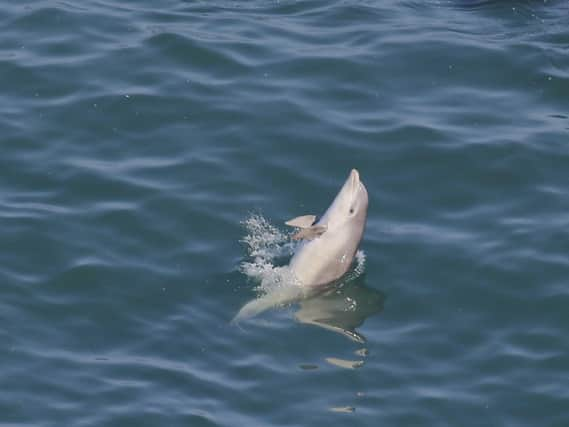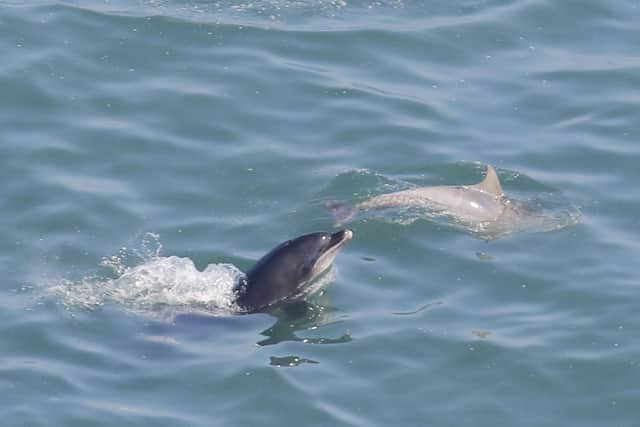RSPB volunteer takes amazing photos of Yorkshire's dolphin pod frolicking off Flamborough Head


RSPB volunteer Jo Symon captured stunning images of the dolphins playing near Bempton Cliffs and Flamborough Head on Monday.
The pod first appeared off Bridlington, Scarborough and Whitby around three summers ago, and they are now thought to live permanently in this stretch of the North Sea, though sightings peak in the warmer months.
Advertisement
Hide AdAdvertisement
Hide Ad

They originally swum south from the Moray Firth in Scotland, where there is a larger population of bottlenose dolphins, the world's most northerly.
Sightings had begun to trickle in over the past few weeks, as dolphins and whales are more commonly see off the Yorkshire coast in clear weather.
Around 25 adults were spotted just 50 metres from the cliffs at Flamborough - a rich feeding ground - by volunteers and visitors to the nature reserve. They were seen 'breaching' the waves and a young calf was visible.
Site manager Dave O’Hara said: ‘In all probability, it’s the search for food that brings them our way. Bottlenose dolphins enjoy a varied diet including cod, herring, sandeels and haddock - and the North Sea is one great big larder for them. Maintaining this food source is one reason why protecting our oceans is so vital’.
Advertisement
Hide AdAdvertisement
Hide AdOther sightings from Bempton Cliffs in recent years have included minke and humpback whales.
The Scottish pod's behaviour has fascinated marine biologists in the past two years, and a decade ago sightings of the species were almost unknown in the Yorkshire area.
The University of Aberdeen confirmed that the April 2019 sightings in Bridlington Bay were the furthest south animals from the group had ever been recorded at the time.
Each year the Bempton Cliffs team takes part in the annual Seawatch Foundation Whale and Dolphin Watch week, collecting and recording data on sightings to help build a greater understanding of the creatures. This year’s event runs from July 24 until August 1.
